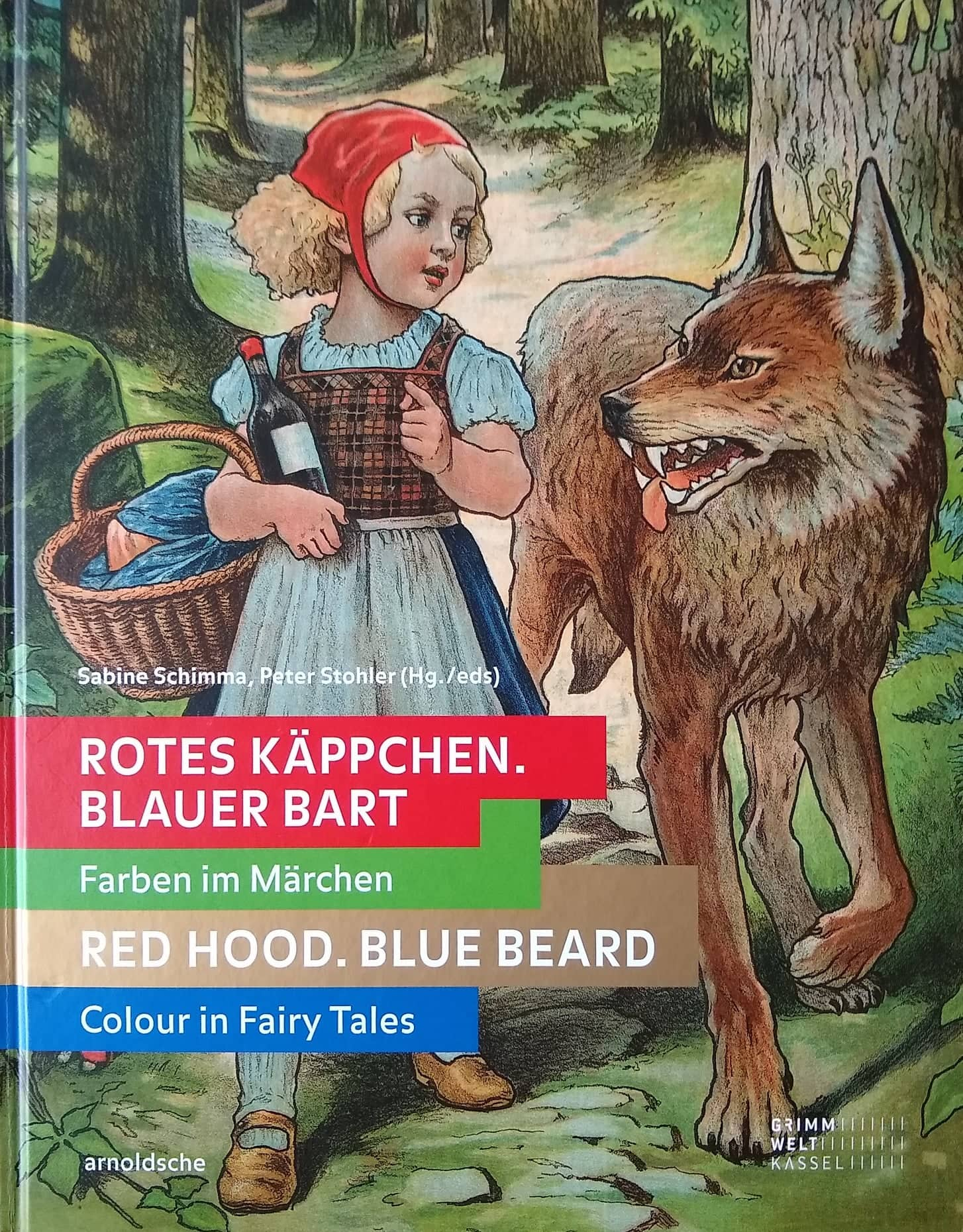by Sabine Schimma. The second chapter in:
Rotes Käppchen. Blauer Bart – Farben im Märchen. Red Hood. Blue Beard – Colour in Fairy Tales
© 2019 arnoldsche Art Publishers, Stuttgart, editors/authors, translator. ISBN: 978-3-89790-573-3 
(footnotes – references – removed)
White is considered the consummate colour and is associated with light and luminescence. Only gold can exceed it in this quality. Since pure white does not occur in nature, it is valued as a token of the special. It is close to divinity and symbolises the beyond and the transcendental. Angels and saints often wear this colour. Snow-White and Rose-Red (GFT 161), for instance, are watched over by an angel in a ‘shining white dress’ as they sleep close to a precipice [Fig. 1]. The Girl Without Hands (GFT 31) receives assistance from an angel in a ‘snow-white garment’, who helps her to appease her hunger in the royal pear orchard. Later, when she is expelled from the court of the king’s consort as a result of the Devil’s ruses, an angel of God, again, accommodates the girl in a little house, in which her hands grow back as a reward for her pious soul.
White is one of the most important colours in Christianity. As implied a moment ago, it is regarded as the colour of overcoming evil and of the hope of resurrection that its luminescent character implies. The sacrificial lamb, which symbolises Christ’s death on the cross in redemption of the world, is white, as is the Holy Spirit in the form of a dove, and likewise the unicorn, which is considered the symbolic figure of the Virgin Mary. White animals also have an accentuated significance in fairy tales and possess supernatural powers: In The White Snake (GFT 17), everyone who eats a morsel of the serpent is able to hear the language of animals. A little white bird sits in the tree planted on the grave of Cinderella’s (GFT 21) mother and, together with the tree, fulfils Cinderella’s wish for three dresses for the prince’s ball. In The Pink (GFT 76), two white doves supply meals to the queen, who is incarcerated in a tower on account of a plot against her. A white duck conveys Hänsel and Gretel (GFT 15) across the water and out of the dark forest following the death of the witch.
In its absoluteness, white is interpreted as the colour of the beginning and, contrasted with black, as the colour of the end or death. The white spaces on a map, for instance, point to unknown, as yet unexplored territories. The white flag of capitulation signals not only surrender, but also hope of a new beginning. Fairy tales do not always uphold the sequence of white and black: while the black hair of Little Snow-White (GFT 53) symbolises her imminent apparent death, her white skin is a sign of her later reawakening. (… …)
(…) (…)
(…) (…)
Next up in the book is Red – again via the poppy:![]()
(Click here to go back to the beginning of the Red Hood. Blue Beard extracts.)
